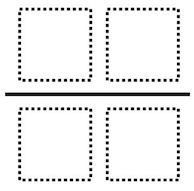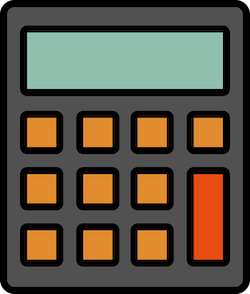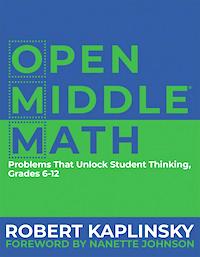A Math Strategy to Unlock Student Thinking
Dear Readers: This is long but definitely worth your time if you teach math and wonder why your students forget so much.
Adapted from Chapters 1 & 2 of Open Middle Math: Problems That Unlock Student Thinking, Grades 6-12 (Stenhouse, 2020) with permission from the author.
Have you ever felt like your math students understood what you taught them, only to find out later that you were mistaken? This has happened to me more times than I can count!
What made this feel especially frustrating was that I didn’t see these issues coming during the lessons. It really seemed like they understood what I was teaching them, and I rarely figured out that I was mistaken until after I saw the assessment results and was already teaching something else.
These experiences made me wonder why I didn’t realize these issues earlier. After all, I was asking students questions and they were getting them right. So how was it possible they didn’t understand? What was I doing wrong? I didn’t feel like I understood where the breakdown was happening until I came across a thought experiment from philosopher John Searle called the Chinese Room.
In this thought experiment, imagine a man who does not speak Chinese, sitting in a room. He has been given a box of Chinese characters as well as a book that lists both the characters he might receive from someone outside the room and what characters he should send back in return.
Then a woman who speaks Chinese fluently comes up to the room, writes a few Chinese characters on a piece of paper, and slips the paper under the door. The man inside picks it up, looks in the book to see what characters he should send back, picks the appropriate Chinese characters from the box, and slides the response under the door to the woman outside.

When I first heard this thought experiment, my immediate realization was, “I’m the man inside the Chinese Room but with mathematics instead of Chinese!” I remember this phenomenon beginning in my eighth-grade algebra class. My teacher would give me a problem that I would solve using a formula I had written in my notes. I didn’t really understand what the problem was asking or what the formula did, but I could figure out what information I was supposed to give back in return and turned in the correct answer to my teacher.
Let’s consider each person’s perspective. The teacher gave me a problem to solve and received a correct answer back. So, from her perspective, I understood what she was teaching me and demonstrated it by solving the problem. However, from my perspective, I was just plugging numbers into a formula from my notes. I did not really understand what information I received or what I gave back. The only thing I was sure of was that I felt like a fake who did not understand algebra or, later, the mathematics I would do in high school and college.
Unfortunately, it’s been my experience that many educators can relate to this story, either as the person inside the Chinese Room, the one outside of it, or both. As educators, it’s scary to think that we may not have the tools we need to determine whether our students really understand what we teach them. After all, we would hope that assessment questions like those on standardized tests would be able to measure true understanding. Maybe not.
What I Learned from My Former Students
One impactful moment in my career happened soon after I transitioned from being a middle school mathematics teacher to a mathematics teacher specialist in Downey Unified School District. I was teaching a lesson at one of our high schools, and many of my former students were in this class.
The lesson I was teaching that day was on point-slope form, and I was eager to see what they knew. To my astonishment, the students told me that they had never learned about slope. We’ve all heard something like that before, and maybe sometimes it’s true, but this time it was baloney because I was the teacher who had taught it to most of them in seventh grade!
I was stunned because the vast majority of these students had earned “advanced” or “proficient” (one of the two highest levels) on our state standardized test. How was it possible that students could earn such high scores yet not be able to build upon what they knew? They didn’t even have a memory of learning about it! I reflected on this for quite some time, and what I finally came to realize was that I was the problem.
I felt embarrassed because, while I thought these kids were proficient or advanced, I was wrong. Many students were really at much lower proficiency levels, but I didn’t have a clue. Looking back, I realized that when they were in my classroom, I had asked them superficial questions about slope. I came to understand that when I asked students superficial questions, I got superficial information back about what they knew. I clearly had students with huge gaps in their understanding, but I couldn’t identify who they were or where they had misconceptions.
I needed a different approach that would value their journey toward the solution as much as the solution itself. I wanted kids debating about the best way to solve the problem rather than simply racing to get correct answers. I wanted them to use more strategic thinking instead of mindlessly using the formula I had just given them. Most of all, I wanted to know when my students had misconceptions so I could do something about them.
After learning from experts like Norman Webb and Dan Meyer, and then much experimentation and collaboration with my colleague Nanette Johnson and others, I figured out how to make and facilitate a kind of problem that would do just what I was looking for.
These problems, called Open Middle problems, help me identify students’ misunderstandings, even when the kids don’t realize they have any. They motivate both students who struggle as well as those looking for more challenge, all while having kids engaged and craving more mathematics. You can easily substitute the problems for what you’re already doing with your students instead of adding yet another item to a jam-packed school year to-do list.
The name “Open Middle” references a very specific type of problem that has:

► a “closed end” meaning that they all end with the same answer.
► an “open middle” meaning that there are multiple ways to approach and ultimately solve the problem. (Source)
To be sure, using Open Middle problems does not eliminate student misconceptions entirely. However, since using them, I now see student misconceptions more clearly and can use them as talking points to strengthen mathematical understandings during the lesson instead of simply lamenting missed opportunities afterward.
I’ve also used them to make more meaningful assessments that provide me with richer information using fewer questions. This type of assessment gives me more accurate results and allows me to spend more time on instruction and less on testing.
I hope you’re excited to see how you could use these problems to help your students. So, let’s explore Open Middle problems to see how they’re different from some of the other problems we’ve used.
Three Eye-Opening Problems
When I first started playing around with Open Middle problems, I knew that they looked different and made me think a little more, but I didn’t understand what made them special. It wasn’t until I started using multiple problems on the same mathematical concept that I was able to see how important these differences were.
To show you what I mean, I want to walk you through three problems on solving one-step equations so we can talk about what makes them different from one another. First, we’ll talk about a traditional problem. I’m sure you can imagine finding dozens of problems that are similar to it in any middle school mathematics textbook. Find the answer and then read on.
Problem 1
Solve for x.
21 + x = 70
When solving this problem, you likely found that x = 49 by either subtracting 21 from both sides of the equals sign or by asking yourself, “Twenty-one plus what number equals seventy?” I wondered how challenging it would be for students, so I used social media to ask teachers to try this problem with their students and let me know what percentage answered it correctly. Out of the 1,120 sixth and seventh graders who attempted the problem, about 92 percent (1,030 students) correctly determined that x = 49.
It probably doesn’t come as a surprise to you that such a large percentage of students solved it correctly. What I wondered, though, was whether asking students this one question (or a whole worksheet of this type of question) was enough to determine how deeply they understood solving one-step equations.
To figure this out, I created another problem on the same topic and standard. Spend some time solving this second problem, and then estimate the percentage of sixth- and seventh-grade students who would be able to solve it:
Problem 2
Using the digits 1 to 9 at most one time each, place a digit in each box to create two equations: one where x has a positive value and one where x has a negative value. You may reuse all the digits for each equation.
☐ ☐ +x = ☐ ☐
This problem is more challenging than the first one. The missing digits make it impossible to jump straight into computation. Most people begin the problem by randomly placing a digit in each box to see what happens. For example, the equation 12 + x = 34 would result in x having a positive value of 22. But now a little more thinking comes from the process of trying to find the negative value. How do you arrange the digits to make x’s value negative?
One possibility is to guess and check, playing around with the digits until x has a negative value. That would eventually work but could take a while. Alternatively, you might think about it conceptually. If the number being added to x is greater than the sum, x must be negative.
For example, in the equation 34 + x = 12, there is nothing positive that you could add to 34 to get 12. So, you can just swap the 12 and 34 in the first equation and get x = −22.
After a combination of guessing and checking, noticing patterns, and using conceptual understanding, people start to generalize their experiences. While there are many potential answers, x has a positive value when the number being added to x is less than the sum. It has a negative value when the number being added to x is greater than the sum.
I don’t know about you, but for me, the second problem made me think differently than anything I remember doing when I was a student or used when I was a new teacher. Sure, I incorporated problems that had boxes to fill with digits, but the thinking needed to complete them was closer to what we experienced with a traditional worksheet. I didn’t have to stop and think conceptually about how the digits I chose affected the results.
I asked those same teachers to also try Problem 2 with their students, and only about 51 percent (571 students) of the 1,120 students correctly solved it! This is a huge difference from Problem 1, so let’s stop and think about what this means.
Problem 1 showed us that about 92 percent of the students could correctly solve a one-step equation problem while Problem 2 showed us that a much lower 51 percent of the students could correctly solve a different one-step equation problem. If you agree that a student who deeply understands one-step equations should be able to solve both problems, then this implies that about 41 percent of the students didn’t really know what they were doing.
Students might have appeared to understand the concept if teachers only gave them Problem 1, but in reality, they had much weaker understandings that weren’t uncovered until they encountered Problem 2. What’s scary about this is that I used to only use problems like Problem 1, so hundreds of students may not have understood what I was teaching them . . . and I was clueless about it.
Problem 2 is our first example of how an Open Middle problem can give us X-ray vision because it helped us identify students’ misunderstandings—even if they didn’t realize they had any—and helped reveal what students actually knew.
I believe that if we use problems only like the first one, there would be a good chance that many of our students would look like they were proficient, even if there were some hidden misconceptions. What I wondered, though, was whether the second problem was enough to measure deep understanding. While it helped uncover some misconceptions, could there have been even more gaps that it didn’t uncover?
I decided to use a third problem to see what else I could learn about students’ (mis)understandings of one-step equations. Take some time to solve Problem 3 and then estimate the percentage of students that would be able to correctly answer the problem:
Problem 3
Using the digits 1 to 9 at most one time each, place a digit in each box to create an equation where x has the greatest possible value.
☐ ☐ +x = ☐ ☐
This problem requires more concentration and brainpower to solve than Problems 1 and 2. It builds upon the second problem, making you think very specifically about how placing the missing digits affects x’s value. If students don’t use conceptual understanding, they’ll have to guess and check for a while before they find the correct answer.
However, if they do use conceptual understanding, they may realize that when the number being added to x has a very small value and the sum’s value is very large, then x will need to have a large value to make up the difference. As a result, 12 + x = 98 will give x the greatest possible value because you can’t make a two-digit number with a lesser value than 12 or a greater value than 98.
In reflecting on Problem 3, there are similar points I want you to consider. Again, the standard and topic are the same as with Problems 1 and 2. However, while guessing and checking may have worked well enough for the first and second problems, it’s painfully inefficient for this third problem. If students don’t conceptually understand how one-step equations work, they could be guessing and checking for quite a long time. To solve the problem efficiently, they must develop and use conceptual understanding by noticing patterns in how x’s value changes.
When teachers gave Problem 3 to the same 1,120 students, only about 37 percent (414 students) of them could solve it correctly! Think about what these results imply if our students are similar to the surveyed students and we assume students who solved Problems 2 and 3 also solved Problem 1.

Unfortunately, I’ve found that students have hidden misconceptions much more frequently than I initially realized. Almost every time I think my students fully understand what I’m teaching them, I find out that there are misconceptions I’ve been unaware of until I use an Open Middle problem.
This is a big deal because for many years, standardized assessments have relied heavily on problems like Problem 1 to determine students’ proficiency. As a result, many students (certainly including my own) may have been mistakenly labeled as mathematically proficient when in reality they were not. With the surveyed students, more than half of them fell into the false-positive gap. This gap is something we should seek to close if we want all students to make sense of mathematics.
If you’re like me and you’ve primarily taught by using problems similar to Problem 1, then the potential of incorporating Open Middle problems like Problems 2 and 3 will make you both curious and concerned about how your students will do. It’s not fun to realize that our students are not making sense of mathematics, but quickly getting actionable data will make fixing this issue easier.
There is no better way to understand what makes Open Middle problems different from one another than by experiencing them yourself. Once you’ve worked on a few of them, you’ll have better perspective as to what makes them different from traditionally used problems.
For further exploration, you’ll find free Open Middle resources at the Open Middle website, sorted by grade level. To read more of Kaplinsky’s book, visit Stenhouse or Amazon.

He’s also the co-founder of the website OpenMiddle.com and the Southern California Math Teacher Specialist Network. His work has been published by the American Educational Research Association (AERA), Education Week, and many others. You can find him online at robertkaplinsky.com and on social media at @robertkaplinsky.




































